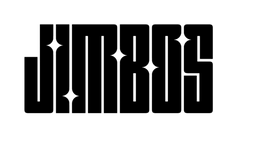Do You Really Need Paint Correction Before Coating?
Applying a ceramic coating to your car without proper paint prep is like waxing over sandpaper. But do you always need full correction before coating? Let’s break it down.
Here’s when you need correction, how much is enough, and what to use to get it done right.
What Is Paint Correction?
Paint correction is the process of leveling surface defects like:
- Swirl marks
- Micro-scratches
- Water spot etching
- Oxidation and hazing
If these aren’t removed before coating, they get locked in—and your ceramic won’t bond or look its best.
When You MUST Correct Before Coating
- Your paint has visible swirls or dullness
- You want max gloss and clarity under a coating
- You’re applying a long-term coating like Gloss Boss
No correction = poor bond + locked-in defects.
When You Might Not Need Full Correction
- Brand-new car with near-flawless paint
- Paint has already been corrected and maintained
- You’re using a short-term spray like Tough As Shell
Even then, a light polish can help your coating adhere better and last longer.
Best One-Step Solution: Picture Perfect Polish
Picture Perfect Polish cuts and finishes in one pass. It’s pad-dependent, so you control how aggressive or soft the correction is:
- Use with a Cut & Finish Pad for heavy correction
- Use with a Black Finishing Pad for final gloss polishing
Zero dust. Zero fillers. Just clean, clear paint ready for protection.
Available direct or on Amazon: Shop All Correction Tools
Correction or Not? Simple Decision Tree
- Paint looks dull or swirled? → Correct it
- You’re installing Gloss Boss? → Correct it
- Car is brand new and looks perfect? → Spot polish or light prep only
Related Posts
- What Is Paint Correction?
- MAXL Coating vs True Correction
- Best Ceramic Spray Guide
- ← Back to: Top 25 Questions Answered
Prep Right. Protect Better.
Picture Perfect Paint = Perfect Protection
Whether you’re doing a full ceramic install or just a gloss refresh, prep is everything. Go one step. Go perfect.
Final Thoughts
Every coating is only as good as the surface it bonds to. If your paint is rough, dull, or swirled—you’re wasting money locking that in.
Spend the extra hour. Your coating (and paint) will thank you.



